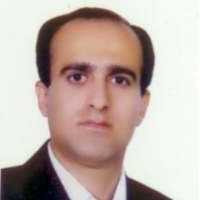Evaluation of the quality of groundwater resources in Zanjan Plain using EWQI and TOPSIS methods
Author(s):
Article Type:
Research/Original Article (دارای رتبه معتبر)
Abstract:
Introduction
Today, we observe a decline in groundwater quality due to the factors such as population growth, industrial expansion, and agricultural development and so on. Considering that human health is affected by the quality of groundwater, conservation of the quality of groundwater is very important in water resources management. Therefore, many quality indicators such as Water Quality Index (WQI) have been developed all around the world to determine the water quality of a region. The purpose of this study was to determine the parameters affecting on water quality in Zanjan Plain using entropy theory and main components analysis, determining susceptible points of contamination and finally, ranking the areas in terms of quality of drinking water with the combination of Topsis method and EWQI index.
Material and methods
This study was conducted in Zanjan Plain with an average rainfall of 323 mm per year and a maximum temperature of 40 °C and a minimum temperature of -29 °C. The parameters that are studied in order to determine the groundwater quality of Zanjan Plain were sulfate, chloride, bicarbonate, acidity, total dissolved solids, sodium adsorption ratio, electrical conductivity, potassium, sodium, magnesium, calcium, and total hardness. Principal Component Analysis (PCA) was used to determine the main components of the water quality in the area. Then, using the EWQI index, the results of this method were explained. The water quality index is defined as a scoring method for investigating the combined effects of the independent parameters on the total water quality. In order to prevent the expert judgments, the weight of each parameter in calculating the water quality index was determined using the entropy method. Ultimately, the ranking of areas in terms of water quality was applied using the combination of the TOPSIS method and the EWQI. TOPSIS method as a multi-criteria decision-making method is a simple and efficient method for prioritization.
Results and discussion
According to the statistical characteristics of the quality parameters, the electrical conductivity and total hardness were higher than the WHO standards, which can be attributed to the geological * Corresponding Author. structure, the presence of calcareous layers, and many evaporate sediments in the plains. The results showed that chloride was the most effective parameter on the groundwater quality in Zanjan Plain. Investigating the groundwater quality changes in Zanjan Plain during 2003-2016 showed that the wells of Koushkan and the suburbs of Zanjan were determined as potentially contaminated points, and the degradation factors of the groundwater quality in these areas were determined chloride (Cl) and sodium adsorption ratio (SAR), respectively. According to the results of the analysis method of the principle components and the diagram of Scree Kettel, total hardness parameter (TH) and Cl were most effective on the water quality of Zanjan Plain, respectively. More than 80 percent of the groundwater quality changes in Zanjan Plain can be evaluated with three factors. The first factor was the most responsible with more than 57 percent of the change. Then the second factor with more than 12 percent of variation and the third factor with 9 percent of the changes were the most important factors affecting the quality of groundwater of Zanjan Plain. In order to prioritize the Zanjan Plain in terms of groundwater quality, the combination of TOPSIS method and EWQI index was used. According to the results of this method, Yengijeh station was selected as the best station with excellent quality and Koushkan station was selected as the worst station with undesirable quality.
Conclusion
Chloride parameter with low entropy and high entropy weight was the most effective parameter in the plain. Also, Yengijeh and Koushkan stations were selected as the best and worst stations, respectively.Keywords:
Language:
Persian
Published:
Environmental Sciences, Volume:17 Issue: 1, 2019
Pages:
41 to 56
magiran.com/p2006008
دانلود و مطالعه متن این مقاله با یکی از روشهای زیر امکان پذیر است:
اشتراک شخصی
با عضویت و پرداخت آنلاین حق اشتراک یکساله به مبلغ 1,390,000ريال میتوانید 70 عنوان مطلب دانلود کنید!
اشتراک سازمانی
به کتابخانه دانشگاه یا محل کار خود پیشنهاد کنید تا اشتراک سازمانی این پایگاه را برای دسترسی نامحدود همه کاربران به متن مطالب تهیه نمایند!
توجه!
- حق عضویت دریافتی صرف حمایت از نشریات عضو و نگهداری، تکمیل و توسعه مگیران میشود.
- پرداخت حق اشتراک و دانلود مقالات اجازه بازنشر آن در سایر رسانههای چاپی و دیجیتال را به کاربر نمیدهد.
In order to view content subscription is required
Personal subscription
Subscribe magiran.com for 70 € euros via PayPal and download 70 articles during a year.
Organization subscription
Please contact us to subscribe your university or library for unlimited access!


